
Name, though it seem but a superficial and outward
matter, yet it carrieth much impression and enchantment.
--- Francis Bacon
When I tell somebody my name, I have given him
a hold over me that he didn't have before. If he calls it out,
I stop, look, and listen whether I want to or not.
--- Frederick Beuchner
The desire to leave one's name for all to see seems to be a modern trait, suppressed in most of us. Fortunately this desire was not suppressed in the ancient visitors to America who left their marks at many sites. The names that these visitors left, together with features of the sites, tell us much about the writers.
The names of Emilianus, Rata, Yanni, and Glome will be mentioned in other chapters. Some ancient people inscribed their names on stone as identification or as autographs. A few could be classified as linguists, writing their names in two or even three scripts and languages.
Maba the Hermit
The person most real to me who carved his name on stone is Maba. I have sat in his kitchen, understood his circumstances, and felt his anxiety and loneliness, stranded alone in a strange land. He lived perhaps two thousand years ago in a small bluff shelter in what is now eastern Oklahoma. It is a most beautiful setting.
Maba came to my attention because of several photographs given to me in January 1975 by Dr. I. C. Gunning, a geologist. The prints led me to the photographer, Wallace Soleman of Hartshorne, Latimer County, Oklahoma, and to his assistant, high school senior, Steve Suter. Soleman and Suter knew of an archaeological site near Gowen, Oklahoma: a bluff shelter which had been robbed by pot hunters from California. If only we could see the artifacts that they removed or know of the other evidence that they destroyed during their unfortunately undocumented excavations, we could add greatly to Maba's history.
Soleman and Suter had attempted to finish the pothunters' excavation by orthodox methods, marking the area in squares and keeping records. They found deer bones, teeth, and charcoal. Perhaps, most importantly, they observed that the bluff shelter had once been partitioned with stone walls. However, their best efforts were ruined by local partying teenagers who kicked over the partitions and displaced everything that had been uncovered.
The same month the photographs were received I visited the site with colleague John Shuller. Several unexpectedly pleasant surprises awaited us. The first was the absolute beauty of the setting. We walked along a plateau; the ground was softly padded with pine needles. Then we climbed down a 10-foot embankment and ledge to the small bluff shelter. It was situated immediately next to a clear running stream fed by seven springs. The little stream led to Gaines Creek, where other important inscriptions have been found. Gaines Creek eventually runs into the South Canadian, Arkansas, and Mississippi Rivers.
The photographs which had been taken by Soleman showed petroglyphs on a pinkish stone wall near the bluff shelter. This vertical panel included a canoe-like boat with an occupant. Although strange symbols appeared under and to the right of the boat, the petroglyph was tentatively dismissed as a cowboy in a canoe.

Fig. 3-1 Inscription on boulder, Maba's Shelter, eastern Oklahoma. Dark circles are grinder and nut holes.
In April Shuller and I returned to the site to trace and photograph. With us that day were relatives of the landowner, a general science teacher, and a geology student at Oklahoma State University. The last two men had helped to excavate the boulder. Also present were two men who had seen the site before it was ever disturbed, and who verified that the large boulder had been buried. This is probably why the lettering is still clear.
Carefully traced and verified by latex mold, all inscriptions were sent to Dr. Barry Fell, who replied, "The remarkable mixture of North African and Iberian Punic seen in this one cave shelter epitomizes the mixture of North African and Iberian roots that make up a great part of many Amerindian dialects."
Fell found that the lettering on the boulder included
three labels of kitchen equipment. The words, "For grinding
grain," were repeated three times (Fig. 3-2). At the
bottom, read right to left, was "D-S" written
in Numidian letters to express in the Iberian Punic language the
words "Da-Sha." At the bottom right, reading
bottom to top, was again "D-S" in Numidian script.
At the top end and to the right of the mortar hole, reading downward,
was once more "D-S," but this time Punic Iberian
letters were used. Below this last "Da-Sha,"
reading right to left were the letters "G-N"
which form the Punic words "Ga-Na," a prayer
meaning "May we be free from want." To the right
of this, the Numidian letters "Ma-o," are used
for the Libyan phrase, "Yes, indeed!" The latter
two inscriptions were written upside down. Perhaps Maba knelt
on the opposite side of the boulder and leaned over its top while
carving them.
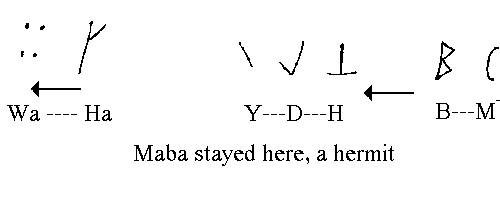
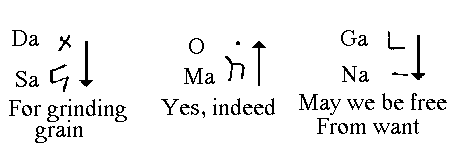
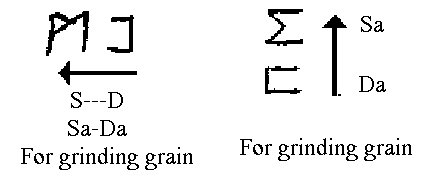
Fig. 3-2 Transliteration and translation of script in Figure 3-1 by Fell. Arrows show direction script is read.
Of great importance is the script to the left of the metate, which reads from right to left using the Tartessian alphabet for the Punic language. Fell explained:
"Tartessian is the language of Tarshish (near modern Seville, Spain) a Semitic tongue which I deciphered last year. Tarshish was destroyed ca. 500 B.C. by Celts in the pay of the Carthaginians. After that it appears that many Tartessians migrated to North and South America."
This line transliterates right to left to "M-b h-d-y," and means "Maba stayed here." To the left of it is added, in Numidian script, "Wa-ha," meaning "hermit."
Another inscription, composed of very old and rounded
symbols, was cut into the gray stone at the top rim of the shelter
(Fig. 3-3). The inscription marked in Numidian "wa,"
meaning "Alas," the standard sign for a burial
(Fig. 3-4). Below it was written again "alas"
in Iberian Punic letters. In the same script to the left is written
"Y" or "ya," meaning "by
misfortune" or "unlucky man." There
also was found "G-T," for "Gat,"
a man's name meaning skinny or scrawny. The whole reads "Unlucky
man, Gat, Alas!" Fell remarked, "Apparently Gat
met with an accident and was buried somewhere nearby. This is
ancient, but I am at a loss to understand why the inscription
is upside down."

Fig. 3-3 Grave marker for Gat, according to Fell,
Maba's Shelter, Oklahoma.

Fig. 3-4 Transliteration and translation of script in Figure 3-3 by Fell.
Remembering the site, it was obvious that Gat could not have been buried in the stone floor of the shelter, but somewhere on the plateau above. The grieving Maba, on his knees near his home, therefore carved the memorial on the rim of the shelter, which would appear to be upside down when viewed from the cave floor.
All this information staggers the mind. What was Maba, this literate man from the Old World who could speak and write in three languages and scripts, doing alone in the interior wilderness of a new continent? Apparently he did not add the pitiful phrase "A hermit" until after the loss of his skinny friend. Did Gat die of malnutrition? I could empathize with Maba's situation, realizing he could never find his way back to his old home alone, deciding to stay in this lovely place by the dependable water supply, hunting, and gathering and grinding his seeds to be "free from want." He built the stone partitions in order to have a safe place he could sleep, warmed by a fire, protected from bears, wolves, and mountain lions.
In search for other clues, I turned my attention to the petroglyphs on the pink stone panel near Maba's kitchen, especially the boat and its occupant (Fig. 3-5). The man sat in the stern with a paddle, facing the bow. His face, under a brimmed hat with a high rounded crown, was in profile. Under the boat and to the right were strange symbols. Although originally thought to be modern graffiti, it was fortunately recorded anyway, by tracings, photographs, a latex mold, and plaster cast, which was studied in light from different angles.

Fig. 3-5 Petroglyph of figure in a boat, Maba's Shelter, Oklahoma.
It is the shape of the boat which seems important. If one can discount the disproportionate size of the occupant to the boat, a feature common in early Mediterranean maritime art, and look only at the outline of the vessel, it is plain to see that is it no canoe. It is the same shape as the Mesopotamian reed ship model illustrated in Thor Heyerdahl's Early Man and the Ocean. The bow is high and curls inward, a necessary part of the construction to keep a reed boat afloat.
A convincing argument for the antiquity of the petroglyph was found in a illustration in a book about ancient Libya which showed a two thousand year old mosaic, now in the National Archaeological Museum in Tripoli. The mosaic was divided into nine squares. One of the squares showed large figures of ancient Libyans in a relatively smaller sized reed boat. The figures wore brimmed hats with high rounded crowns, very similar to the Maba petroglyph. A closeup of one of these hats is found in Fell's Saga America, taken by his photographer Peter Garfall during a visit to the National Archaeological Museum in Tripoli (Fig. 3-6). Other figures in the mosaic show men holding an oar, throwing out an anchor, and pulling in nets. Some of these men also wear hats of the same style.

Fig 3.6 Comparison to Fig. 3-5: Mosaic of man in boat with simular hat, Tripoli, Libya. From Photograph by Peter Garfell.
The Oklahoma petroglyph may be a self-portrait of Maba showing the type of boat in which he traveled. The symbols near the boat are not understood. Beyond the symbols on the same slab of stone, is incised a 4-inch petroglyph which may depict another small boat (Fig. 3-7). The curved lines above a straight hull shows the interior of the boat. The loop-like projection at one end could be a handle to pull the boat ashore or a place to lash a steering-oar. Perhaps this boat was used by Maba for fishing in the small stream near his home.
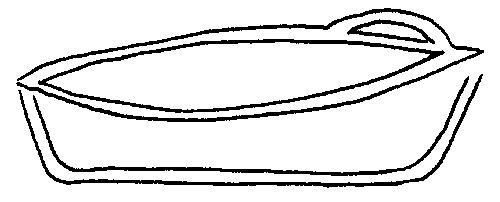
Fig. 3-7 Petroglyph of small boat, Maba's Shelter, Oklahoma.
Who was Maba? From what country did he come? By deduction, he was a Libyan who had migrated to Tarshish in Spain and then to America with a shipload of fellow travelers who died of disease or some catastrophe, leaving Maba the only survivor.
The site was being vandalized and had to be protected. Another trip was made on May 1 of the same year, accompanied by Gunning, Soleman, Dale Murphy, and by special invitation Dr. Don Wyckoff, the Oklahoma State Archaeologist. There was no time to give Wyckoff all the necessary background as we bounced along in a truck to the site. It was explained that a boulder had "kitchen talk" incised in ancient script which translated, and that there were petroglyphs of Old World visitors. Knowing Wyckoff's rigorous training in archaeology but his dearth of knowledge in epigraphy, it was also explained that he could not be expected to immediately believe the evidence he would see, and he replied that he certainly could not. At the site Gunning knelt to inspect the lettering, Wyckoff did not. But he was interested in the bluff shelter as an archaeological site worthy of protection, and that was enough at the time.
In the autumn of 1980 Shuller, Soleman, and I again returned to check the site. When we reached the shelter, we found that the boulder was still intact with its writing. But the petroglyphs on the cliff wall had been utterly ruined by blobs and initials in red spray paint. Although dismayed by the wanton destruction, we were grateful that it had been previously fully recorded.
As we walked back along the plateau, there we saw another conical mortar in the bedrock. It was shallower than the big one on the boulder from the shelter and not far away lay the cone-shaped pestle. With a sense of reverence, I wondered if my hands were the first to hold it since Maba's, as I ground a few acorns. We did not remove the precious artifact, but put it a little distance away so a casual observer would not realize that the two stones belonged together. The landowner was notified of the find, and perhaps he rescued it later.
In November 1983 the landowner appealed for help in preserving the site, which was threatened by strip mining. Wyckoff was alerted and said he would do his utmost to see that state laws concerning archaeological sites were enforced.
If Fell is correct in his translations and I am right in my deductions, here is the record of Maba the intelligent, Maba the literate, Maba the lonely hermit who wrote his thoughts; they are passed on so that he will not be forgotten.
Surly The Son
In October 1970 Charles E. Furlow of Decatur, Arkansas, donated a dim photograph of a carved stone he had found in the woods near Maysville, in extreme northwest Arkansas. Furlow said he had tried to find the stone again but had not been successful.
The photograph showed only a row of straight lines and one curved line (Fig. 3-8). As I had not yet heard of Ogam writing, the photograph was buried in ever-growing files. However, in 1975 it was recovered and sent to Fell in the hope that he might discern something of interest. Fell wrote back:
"Indistinct, but seems to read 'Mui-m-b M-s, M-l' and means 'Surly, son of Stag without Antlers.' This is old Gaulish, in Ogam script, ca. 200 to 100 B.C. We will report Celtic settlements in New England in September."

Fig. 3-8 Autograph of Surly, western Arkansas. Drawn and transliterated by Fell from photograph by Charles Furlow.
The Maysville inscription was the first time that Fell had seen the dipthong "UI," the curved line below the stemline, in an American inscription.
Were two generations of Gaulish Celts in interior America together, Surly and his father? Or did the elder still roam in ancient France, sans antlers?
Mado the Bear Hound
Another Gaul by the name of "Mado" left his signature, as translated by Fell, on a western Oklahoma boulder near a tributary of the Cimarron River; the script was discovered and traced in June 1978 (Fig. 3-9). The name means "Bear-Hound," and was expressed in Celtic Ogam script.
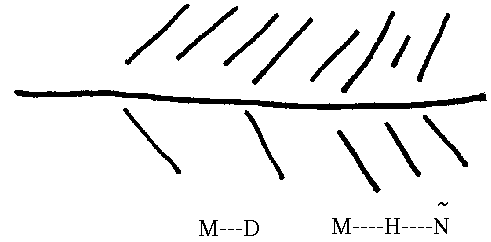
Fig. 3-9 Autograph of Bear-Hound, western Oklahoma.
Transliteration and translation by Fell.
Waly, Friend of God
A wonderful book about rock art in Texas contains apparent ancient inscriptions. Fell was able to translate some of these inscriptions as names. One inscription is from the site of Rocky Dell, Oldham County, which is in the Texas panhandle on a tributary of the South Canadian River. Photographs from this site show many petroglyphs similar in style to those found to the
Much of the Rocky Dell paintings and petroglyphs are now obliterated, and for our knowledge of them we are indebted to north, in the Oklahoma panhandle and in southeastern Colorado.Lieutenant Amiel Weeks Whipple of the U. S. Army, who visited this site in 1853.8 Whipple was part of a group travelling from Fort Smith, Arkansas, to Los Angeles to determine the most feasible route for a railroad. A 3-inch stack of his original sketches are in the Oklahoma Historical Society Library, and his comments are invaluable. He described a petroglyph of a ship at Rocky Dell, but unfortunately the sketch accompanying the description has been lost for a hundred years. The Rocky Dell site contains a mortar and pestle grinder like Maba's, who also lived on a tributary of the South Canadian River.
Fell translated an inscription from the ceiling of the bluff shelter at the Rocky Dell site (Fig. 3-10). As recorded it appears to be comprised of only four letters. Fell's comments are as follows:
"Reference to Diringer's tables of letters (reproduced page 238 ESOP Volume 15)9 shows that the above inscription reads from right to left in South Iberic script. The language, as we now know, is related to Arabic. The first three letters are the well-known Semitic (especially Arabic) name 'Waly,' meaning 'friend' or 'friend of God.' (see Stark, Personal Names in Palmyrene Inscriptions, page 85A.)10 It offers in Safoetic as well as Arabic. The last sign is more problematic. I think it is a double letter (digraph) made up of (g) and (w) and representing the word 'wg, = Wagi, = Signatory, signature, signed' (Wehr, 1091). So, 'Waly, his signature.'"
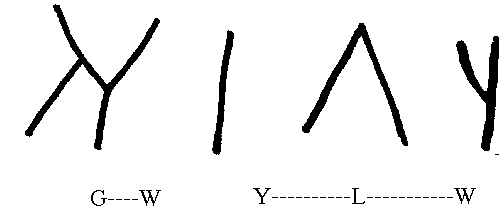
Fig. 3-10 Autograph of Waly, Texas. Transliteration by Fell. Read right to left. Redrawn from Newcomb and Kirkland.
Salah, The Righteous
The second Texas inscription which was pointed out to Fell from the same reference is located in the extreme western part of the state, at a site called "Hueco Tanks" (Fig. 3-11).13 Fell commented in a 1987 update:
"Since you found this in the book The Rock Art of Texas Indians, other South Semitic scripts have turned up in America: Sabean, Safaitic and Thamudene. All are similar, and vary widely as to the letter forms. The above shows features of all three, and the phonetic values are therefore uncertain. The date could be as late as 200 A.D. The language is Arabic. The letters are to be read from right to left.
"Possible readings are (1) 'Kalah,' a personal name meaning 'gloomy.' (2) 'Salah,' or 'Salih,' a personal name meaning 'Righteous' or 'Pious' or 'Devout' (Wehr, 523)."
I prefer the last reading.
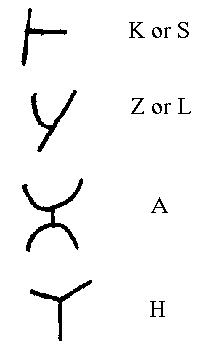
Fig 3-11: Autograph of Salah, western Texas. Transliteration by Fell. Redrawn from Newcomb and Kirkland.
It is worth noting that Waly and Salah probably never saw nor heard of each other. Western Texas is a big place, and they may not have arrived at the same time period. From the location of his autograph, we may deduce that Waly came up the South Canadian River via the Arkansas and the Mississippi. Salah may have traveled further west in the Gulf of Mexico and entered the Rio Grande. They did have in common a Mediterranean origin, a love of exploration, and, if their names are meaningful, both were devout. It is obvious that both had the desire to identify themselves on enduring stone.

The Bearded Profile
A second chance to explore the Turkey Mountain area occurred on New Year's Day of 1976. The last day of 1975 was a warm and sunny 70o Fahrenheit, and the promise of assistance from a group of college students was heard. During the night the temperature dropped to 20o. Nevertheless, the next morning at the meeting place was one young man, Bart Torbert. Considerate and respectful, Torbert was to assist me ably many times during the coming years.
In order to drive as close to the site as possible, the car was parked in a private lot of the city sewage plant, not knowing that this was forbidden. Later we found a sign on the windshield threatening a tow-away. Meanwhile, bundled to our ears and carrying paper, crayons, a gallon of liquid latex (labeled "Do not allow to freeze"), and a paint brush, we walked down the track to a point where there was more distance between the track and the cliffs.
We were hunting the profile of a man's head. As sketched by Coover, it featured a long pointed beard. When we found it, about 15 feet high on the cliff, Torbert managed to make a latex mold only because he was 6 feet 4 inches tall and stood on rocks (Fig. 3-14). Deeply pecked, the head measured 17 inches high and 25 inches long. The man wore a softly-folded headdress like a snood, his nose was in a straight line with his forehead, his chin receded, and his pointed beard was absurdly long. I had seen such a profile before, but on this day I could not remember where.
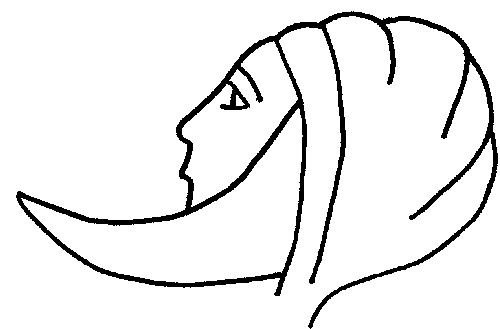
Fig. 3-14 Pecked profile, Turkey Mountain, Tulsa, Oklahoma.
Gwen the Linguist
Below the petroglyph of the face was a space where a huge slab of stone had split away from the cliff, forming a hallway about 3 feet wide. Pecked on the inner wall were the legends, "LOS CAVE" and "Bad Dog." We turned our attention to an inscription on the cliff to the left of the profile, at chest height. It consisted of vertical lines which intersected a horizontal stemline formed by a deep natural crack. Below were three symbols which looked like the English letters "PIA."(Fig. 3-15). I was reasonably certain that the top line formed Ogam script, and I suspected that the three capital letters might also be ancient script because of the shape of the "A" (see Appendix A, page 469).
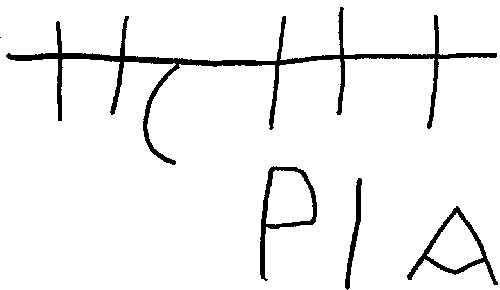
Fig. 3-15 Bilingual autograph of Gwen, Turkey Mountain, Tulsa, Oklahoma.
As usual, the tracing of this inscription was sent to Fell. He replied, "The Ogam script is 'G-W-N,' meaning 'Gwen' or 'Gwynn,' masculine form of 'Fair,' one of the commonest Celtic names and equivalent to the English 'White.'" He also said concerning the letters "P-I-A," "I think this must be modern initials."
To this I replied, "Look again! The lettering is all of the same age, pecked with the same tool, and this is not a Roman 'A.' The crossbar is bent down like the Iberic form of the letter." Soon a note was received from Fell saying:
"Congratulations again. Your second sense for antiquity triumphs. Upon your repeated urging to think about 'PIA' again, I find that this is a fine bilingual. 'P I A = Pa-ya-a = White' in Punic."
The latex mold which was later made and sent to Fell was photographed and used in his book America B.C. Fell wrote:
"Gwynn, an early Celtic explorer, put his autograph in two languages on a rock face on Turkey Mountain near Tulsa, Oklahoma. The inscription below the Ogam, reading from left to right, are the North Iberian letters, 'Pa-ya-a,' spelling a Punic word that also means 'white.' The date of the inscription is perhaps around 500 B.C."
Three years later I received a telephone call from the Tulsa Police Department, informing me that I was being prosecuted for stealing Tulsa's rock! Astounded, I asked, "What rock?" and was told that it was the one published in the book, America B.C. I said, "Sir, the inscription is on a cliff and the cliff is still there." The caller apologized.
In light of Fells's verification in 1976 that a Celt
from Iberia had stood at the site, the profile with the long beard
was reconsidered. In searching references I found a dimly-remembered
illustration with the chart of the Iberic alphabet, in Volume
2 of David Diringer's The Alphabet. On a jagged fragment
of an excavated vase from Liria, Spain, rode two Iberian horsemen,
both wearing snood-like headdresses and both with the same receding
chins and prominent noses in line with their foreheads. One of
them had a long pointed beard (Fig. 3-16).
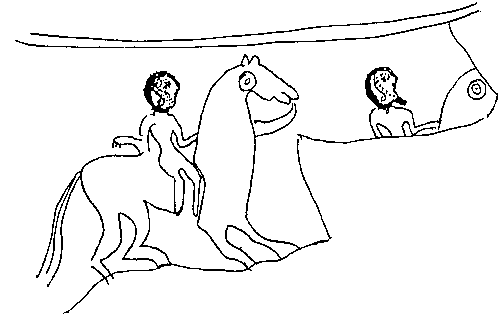
Fig. 3-16 Comparison to Fig. 2-14: Profiles of Iberian Horsemen. Redrawn from Diringer.
Was there the portrait of an Iberian on a Tulsa cliff? The profile was pecked in rather a crude manner. So was the "LOS CAVE" and "BAD DOG." It was rumored that in the 1920's a hobo had lived at the site in a shelter he had made. There were gouges at the entrance to the narrow hallway as if someone had hung a gate. There were notches cut in the top of the slab and also into the cliff opposite as if someone had laid boards across for a roof. Had a hobo named LOS pecked the profile? Latex molds of all the petroglyphs concerned indicate that a different tool was used for the profile, than was used for the "LOS CAVE" and "BAD DOG" inscriptions.
Zarya the Farmer
My assistants Shuller and Murphy happened to be students at universities in Tulsa during the spring of 1976. They explored Turkey Mountain and reported more inscriptions, one of which was on top of the slab of stone which stood upright by the profile and the Gwen bilingual. I had to see what they found.
The day we scheduled to go to the site was rainy and turned into a deluge as we walked down the track. With us also was Harold Arter, a co-worker. Our cameras were useless. Who could take photographs with water running over the lens?
Upon reaching the upright slab, we noted that it was 12 feet tall on the inner side but had a 30-foot drop-off on the side toward the track. It was about 3 feet wide on top. Our intention was to get me onto the top to inspect an inscription that Murphy had described. But how?
Shuller had a plan. Since Murphy was young and slightly built, he could be boosted part way. He would scramble up first. Shuller, being 6 feet 3 inches tall, made a good step-ladder; he would stand against the slab. Then came the tricky part: I would climb onto a 6-inch shelf of stone protruding from the cliff side opposite the slab. From the shelf, I would step across onto Shuller's shoulders. Then Murphy would pull me up. This plan was carefully considered. I was wearing heavy hiking boots, a man's raincoat, a plastic head scarf, and gloves which I took off to wring out while water ran off my nose and chin and cascaded behind my glasses. Why not try? Soon I was on top. How could the slanting surface be slick with mud?
On a later trip, I studied the inscription more carefully. It is always frustrating to find an inscription damaged by vandalism, or by natural weathering. Obviously, this can make an inscription difficult or even impossible to read, even though a careful and correct copy is submitted to the translator. This is a price we often pay in the search for ancient writing. Here the symbols on top of the slab had been spalled by the elements.
The inscription consists of three lines (Fig. 3-17). Above the rectangle are three letters, the first of which is spalled in the center, and an arrow pointing up-river. Within the rectangle are either nine or ten symbols, with the first and third broken off at the top. The fourth, or fourth and fifth, are problematical. Working within these limitations, Fell stated that the top three letters, read from right to left, are a name in Iberian Punic: "Z-r-A," or "Zarya." The meaning is "farmer," the same meaning as the English name "George." Fell also stated that an Iberian king who left his record in New York has this same name. The letters within the rectangle are also Iberian Punic, reading from right to left "K- -s -r-p-i-," or "continue on this way." This would relate to the pointing arrow mentioned above. Two other letters on a slant below, with one intersecting the bottom line of the rectangle, are the Numidian letters "s(z)o-h," meaning "continue on." Thus, the inscription is bilingual, according to Fell.
More directional markers are found to the south,
or downriver. There Shuller and Murphy had found a carved boulder
slanted against another stone and the bank, as if forming an entrance
to a shelter. Two symbols there resemble windows: the first with
two horizontal panes, the second with two vertical panes. Fell
thought the first had been intended to be a symbol resembling
the numeral "8," distorted to a more easily carved
squarish form. If this is correct, the symbol might transliterate
to "s-b," meaning "go on" or
"keep traveling."
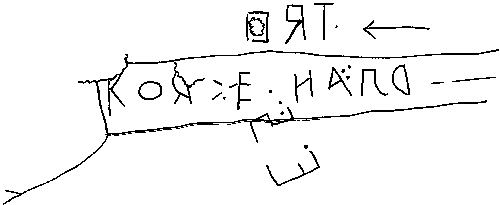
Fig. 3-17 Autograph of Zarya and bilingual message deciphered by Fell, Turkey Mountain, Tulsa, Oklahoma.
Sturdy and Zeb
Shuller and Murphy had also found another inscribed boulder. It was above and near the first large boulder by the railroad track. The 32-inch inscription on the large, knee-high boulder consisted of several letters, each 4 to 5 inches high. It may have been made by the same person who carved the message near the tracks, as one of the symbols repeats the bisected oval found there.
The symbols in the inscription are grouped like letters
forming words. One group consists of three letters: a backward
"L," the bisected oval, and a straight vertical
line with a straight branch to the right (Fig. 3-18). Fell stated
that if intended for the slightly different Iberian Punic "w-t-d,"
read right to left, the word would mean "Sturdy,"
a man's name.
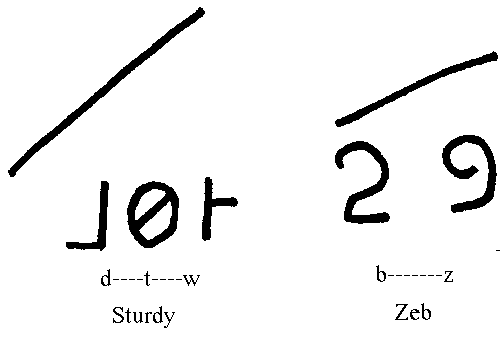
Fig. 3-18 Possible autograph of Sturdy and Zeb, Turkey Mountain, Tulsa, Oklahoma. Transliteration and translation by Fell.
To the right of these letters and slightly higher on the stone, are two symbols which at first glance resemble the numerals "2" and "9." But the "2" is not like our Arabic numeral "2," and the "9" is not closed and the stem is curved far to the left. Fell stated that if not the numeral "2," then it may be the Iberian Punic, read right to left, "z-b," or "Zeb," as in "Zebedee," a common Semitic name meaning "Gift (of God)."
There are bold diagonal slashes above each group of letters. Although their meaning is not understood, Fell and I think that the slashes suggest that both groups were made at the same time, and that the last group is not a modern numeral.
The Piper
Flooding from the Cimarron River in western Oklahoma has for centuries built up sediment layers under a cliff side covered with ancient inscriptions and petroglyphs. A very interesting carved face and body, buried to the hips, had apparently interested others before us who had removed the silt to the area of the feet (Fig. 3-19). We attempted to photograph the bottom lines. This was difficult because of the cramped space and the dampness and discoloration of the stone. A tracing was made.
The face was as crude as a jack-o-lantern and had slanted eyes. It appeared to have a straight beard under a smiling mouth. The body had a small waist like a female and the calves were curved. Although we were used to almost all the figures in the area being phallic, still we could not agree that a long and crooked line between the legs indicated this. Male or female?
The figure had been called everything from a hermaphrodite to a mongoloid. Perhaps the letters above the head, 5 to 6 inches high above the 23-inch figure, would solve the mystery. All of the material collected was submitted to Fell.
With his deep perceptiveness, after translating the Numidian script used for the Arabic words, "Danzan gin," which is Berber (Numidian), Fell said the figure is a flute-player. The top row of four letters, reading left to right, is "Da-Z-N," which means "To tune a musical instrument" (Wehr page 301B), and the other letters, reading top to bottom, are "G-I-N," meaning "melody, or tune." So the translation becomes "Piping a tune."
So the beard is a flute, and the line between the legs, Fell suggests, is "a snake being charmed." It holds itself upright on one coil. One can imagine it swaying to the music like its Old World counterparts.
The reader may decide for themselves the gender of this figure.

Fig 3-19 Petroglyph of The Piper, Cimarron River,
western Oklahoma.
Nat the Celt from Iberia
After Fell deciphered some of the inscriptions that Earl Syversen and I had recorded at Picture Canyon, Colorado, it was realized that it was important to enter the high cave, above the image of Mars, as described in the chapter "The Graven Images." Very early on a Saturday morning in July 1975, Arter and I took off from a small local airport in his two-seated Cessna, headed for Colorado taking a gallon of liquid latex with us. About three hours later, flying over a deserted part of western Oklahoma, there was an explosion in the plane. Both of us mentally said goodbye to dear life. Arter, to his astonishment, found that he was still flying merrily along and all his instruments were behaving.
The odor of ammonia filled the interior. The latex could not withstand the combination of altitude and heat from the sun and had flipped its metal lid. Luckily, it remained upright.
Shortly afterwards, we landed at a small airport in the Oklahoma panhandle. We were met by a rancher's wife, who generously had offered to assist us in our explorations. Later that day, we were back at Picture Canyon, accompanied by the lady; her ranch foreman, who acted as guide; and Bill Burchardt, editor of the official Oklahoma tourism magazine, Oklahoma Today, and his wife, Clara. Burchardt had already published his own articles on this unique area, and was very interested in anything new.
On this visit we took a ladder. No time was lost in finding the enigmatic cave. Entering, we saw that it contained three tiers or levels and was so full of inscriptions and petroglyphs that we had to guess which was most important to record that day. It took another six or seven trips to fully record everything. Although we were to determine eventually that this large cave was also inscribed with Iberic, Numidian, and Egyptian hieratic, it was an Ogam inscription which first caught my attention.
At the left of the entrance to the cave, on a knee-high vertical face of the stone wall, was incised an Ogam inscription boldly spread out over 22 inches (Fig. 3-20). A Celt from Iberia had written his autograph. His full name was "Nat MacGanian."
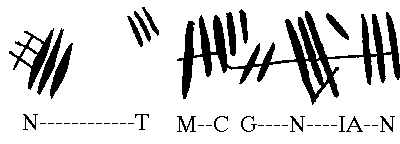
Fig. 3-20 Autograph of Nat MacGanian, Picture Canyon, southeastern Colorado. Transliteration and translation by Fell
Nat was not too skilled as a writer according to Fell.28 He apparently made his first "N" with a vertical stemline before deciding to spell his name horizontally. Starting over with another "N," Nat connected his letters vertically. Whoever taught Nat MacGanian his alphabet must have said that Ogam strokes appear above, below, or through a stemline, but forgot to mention that short strokes should actually come to the stemline. Nat let part of his "C" intersect the stemline and combined the dipthong "ia" (an "X" shape) with the lower part of his second "N." A possible "H" hangs by itself before the final "N," which might make the sound of the last syllable "han." But, Nat did a very good job of separating his letters, not only with spacing but by slanting his Ogam strokes differently, to emphasize their groupings. In the same vein, he distinguished his last name from his first, by placing them on different stemlines. Although some doubt can be cast on his autograph, it is readable if one allows for his deplorable handwriting.
Ras the Watcher
In the same cave, also on the left but much higher, was another group of petroglyphs which resembled the shapes of birds. Most of this group hung out over space, so only photographs could be obtained.
On Labor Day 1975 I was taken by Fell to sites in Vermont and New Hampshire. At South Woodstock, Vermont, an eye symbol had been found among many important evidences by Byron Dix, our guide. At Mystery Hill, New Hampshire, the property owner Robert Stone had found an eye petroglyph. It was the same general shape, with the downward strokes resembling legs, as the symbol in Picture Canyon, that I had thought was a bird. When the Colorado shape was drawn for Fell, he said that this was the Egyptian hieratic symbol for the eye. The downward strokes indicated the path of tears.
Returning later to the big Picture Canyon cave with
Shuller and Murphy, both of whom can apply a paint brush while
leaning out over space, we obtained latex molds of the entire
panel (Fig. 3-21). He also recorded a nearby petroglyph with a
similar-shaped body which had been dubbed "the four-legged
bird. It resembled the swift road-runner. This figure is discussed
further in the chapter "The Stone Menagerie."
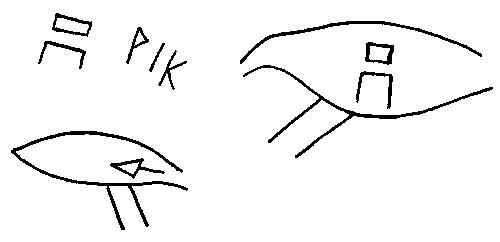
Fig. 3-21 Trilingual autograph of Ras according to Fell, Picture Canyon, Colorado.
A few inches from the eye symbol we also recorded another fainter form which is very similar. This symbol was almost obliterated by modern graffiti, probably the initials of vandals. The underlying eye or bird is so damaged that it is difficult to know its true meaning.
After studying the recordings from the entrance to the large cave, Fell identified the 10-inch-long eye shape, and script to its left as the name "RAS," repeated three times, once each in Egyptian hieratic, Libyan (Numidian), and Iberian Punic.
Ras had apparently first cut the eye, which is the Egyptian hieratic word "RS," meaning "Watchful." Then, inside the eye he wrote the Numidian letters, read from top to bottom, "R-S." This also means "Watchful," or "Wakeful." Finally, to the left, he repeated the same Numidian letters, and next to them is incised in North Iberian script "Pa-Ya-Ka" (which resembles the English letters "P-I-K"). In Iberian Punic, "Pa-Ya-Ka" means "Early Awake." Thus we have a trilingual autograph, in an area full of script from these three cultures. This translation has been previously published in Fell's book America B.C.
The "RAS" trilingual panel, placed high on the left side of the cave on an overhang, is in a position that commands a view of the entire canyon floor to the right and left. Was Ras so-named before the inscription was carved, or did he acquire the nickname "Watchful" because he kept vigil in this large cave, watching always for other visitors and potential enemies?
Names ---- Names from the Old World in the New World:
Maba and Gwen and Ras, written in two and three scripts. Bold
men slashing and pounding their names into permanent stone, a
silent cry: "Remember me!" I am glad to have had the
opportunity for a part of the remembering.